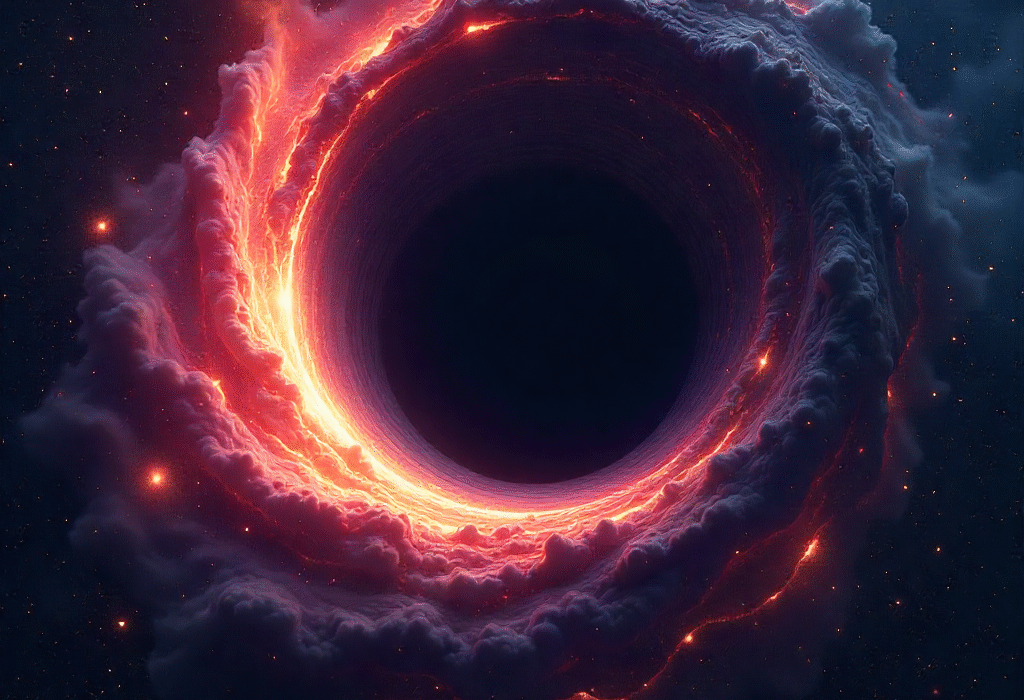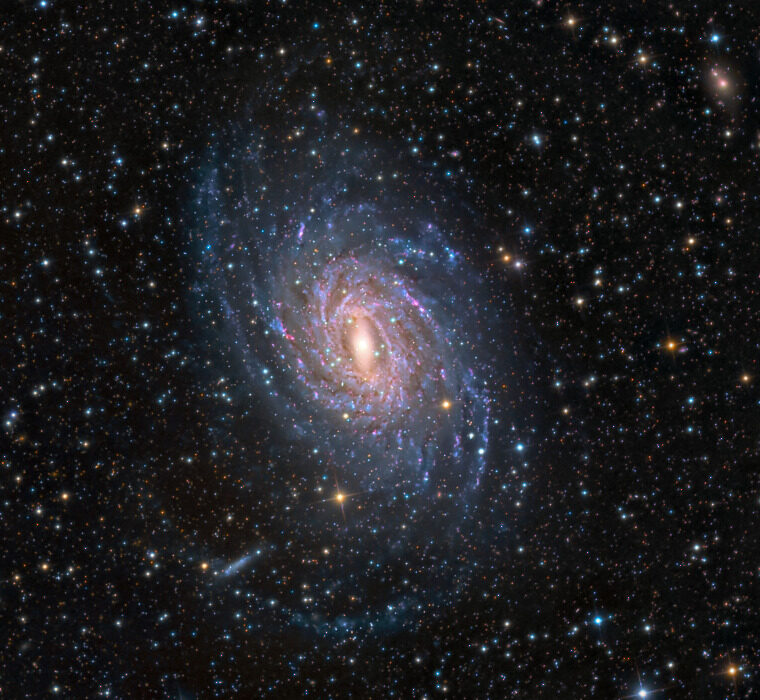For centuries, humans have looked up at the night sky with a mixture of awe and curiosity, imagining that among the countless stars there might exist life forms that rival or surpass our own intelligence. Yet despite decades of searching, we have found no definitive evidence of extraterrestrial life. This apparent silence has puzzled scientists and philosophers alike and has given rise to one of the most enduring questions in modern thought: could alien civilizations visit Earth without our knowing?
To address this, one must confront the tension between what is scientifically plausible and what captivates the human imagination. The cosmos is vast, and the probability that life exists elsewhere is high. Yet the same immensity of space imposes severe constraints on interaction. Distances between stars are measured in light-years, and even the fastest spacecraft designed by humans would take millennia to traverse these expanses. Any theory about undetected alien visitors must reconcile the laws of physics, the limits of technology, and the subtleties of detection.
The Vastness of Space and the Challenge of Travel
One of the most fundamental obstacles for any extraterrestrial civilization is the sheer scale of the universe. The nearest star system, Alpha Centauri, lies over four light-years away—more than twenty trillion miles. For comparison, Voyager 1, humanity’s fastest and farthest-traveling probe, has taken more than four decades to journey just over 20 billion kilometers, a fraction of a light-year. Even assuming alien technology far surpasses our own, traveling interstellar distances poses staggering energetic and temporal challenges.
Scientists have theorized several methods by which advanced civilizations might attempt interstellar travel. Concepts like generation ships, where communities live and die aboard self-sustaining vessels for centuries, or hypothetical faster-than-light travel using warp drives, are often discussed in speculative physics. Yet these ideas remain largely theoretical, constrained by known laws of relativity. Any alien race attempting to visit Earth would need to overcome obstacles that even the most optimistic scientific projections find daunting. This raises an intriguing possibility: if aliens have visited, their methods might be subtle, indirect, or entirely invisible to our current detection capabilities.
The Limits of Human Observation
Our ability to detect extraterrestrial visitors is limited not only by the vastness of space but by the narrow scope of our senses and instruments. Humans perceive only a tiny portion of the electromagnetic spectrum, and our detection technologies are constrained by what we know to look for. The discovery of radio waves in the early twentieth century sparked the search for signals from intelligent civilizations, yet these searches are inherently selective. Aliens might communicate in ways entirely foreign to us—through particles we cannot yet detect, quantum entanglement, or dimensions beyond our comprehension.
Moreover, any spacecraft visiting Earth could be deliberately designed to evade detection. Cloaking technology, perhaps manipulating electromagnetic signatures or using materials that absorb light and radar, could render an object effectively invisible. Even if such technology is within the realm of possibility, it would require a level of sophistication that suggests the aliens are not only technologically advanced but profoundly strategic. From this perspective, it is conceivable that extraterrestrial visitors could have arrived on Earth undetected, leaving only the faintest footprints in natural phenomena or anomalous observations.
Ancient Encounters and the Allure of Myth
Throughout human history, cultures have reported encounters with mysterious phenomena: flying objects, radiant beings, and unexplainable events. These accounts, often interpreted through the lens of mythology or religion, sometimes echo descriptions that modern ufologists associate with extraterrestrial visitors. Ancient texts, cave paintings, and oral traditions from diverse civilizations reference entities descending from the sky, interacting with humans, or imparting knowledge beyond ordinary comprehension.
While mainstream science regards these accounts with skepticism, they underscore an essential point: human perception is limited, culturally influenced, and often unreliable. It is plausible that if alien visitors interacted with Earth in subtle ways, their presence might have been misinterpreted, mythologized, or entirely overlooked. The boundary between myth and reality is porous, and in the absence of verifiable evidence, these narratives remain tantalizing glimpses of what might lie beyond our understanding.
The Zoo Hypothesis and Intentional Concealment
One of the more thought-provoking scientific theories addressing undetected alien visits is the “zoo hypothesis.” Proposed in the 1970s, it suggests that advanced extraterrestrial civilizations may deliberately avoid contact with Earth, treating humanity much like zookeepers observe animals in a reserve. Under this hypothesis, aliens are aware of us, monitor our activities, and intentionally remain hidden to prevent interference with our natural development.
This notion reconciles several perplexing observations: the lack of clear extraterrestrial signals, the vast technological disparity likely required for interstellar travel, and the persistent reports of unverified phenomena. If aliens are intentionally concealing themselves, it implies a level of strategic sophistication far beyond our current understanding. They may recognize that premature contact could disrupt human society, our culture, or even our evolutionary trajectory. In essence, Earth could be a cosmic observation post, a laboratory in which intelligent life is studied without its subjects ever realizing the presence of observers.
Quantum Mechanics and the Possibility of Hidden Dimensions
Recent developments in physics suggest that reality may be far stranger than our senses allow us to perceive. Quantum mechanics and theories of higher dimensions posit phenomena that could theoretically enable invisibility, nonlocal interactions, or travel through dimensions inaccessible to ordinary perception. Some physicists speculate that advanced civilizations might exploit these mechanisms, allowing them to traverse space in ways we cannot detect, or even manipulate matter in ways that appear supernatural.
If such technologies exist, conventional searches for extraterrestrial life—telescopes, radio arrays, and spacecraft missions—might be fundamentally inadequate. Aliens could operate within hidden domains, their actions imperceptible because they exist partially outside our dimensional frame of reference. While this remains speculative, it highlights a profound point: our understanding of the universe is incomplete, and what seems impossible today may be trivial for a civilization with millennia of scientific advancement.
The Role of Probability and Statistical Logic
Despite these possibilities, scientists approach the question with caution. The Fermi Paradox—coined by physicist Enrico Fermi—poses a simple yet troubling question: if intelligent extraterrestrial life is common, why have we not observed clear evidence of it? The paradox reflects the tension between the high probability of life in the universe and the absence of detectable signs.
Some researchers argue that the answer may be statistical. Civilizations capable of interstellar travel may be exceedingly rare, or the window in which a species possesses such technology may be brief. Earth may simply not be visited because advanced civilizations either avoid contact, self-destruct, or have not yet reached our region of space. The absence of evidence is not necessarily evidence of absence, but it imposes a probabilistic framework that tempers speculation.
Unexplained Phenomena and Scientific Scrutiny
From unidentified aerial phenomena to anomalous electromagnetic readings, modern science occasionally encounters data that defy conventional explanation. While most anomalies are eventually explained as natural or human-made phenomena, a small subset remains unresolved. These instances spark public fascination and fuel speculation about alien activity.
Scientists approach such phenomena with methodological rigor, seeking repeatable evidence and corroboration. To claim that extraterrestrials have visited Earth undetected requires a standard of proof far beyond anecdote or isolated observation. Yet the possibility persists that we may have overlooked subtle signals—tiny disturbances in physical systems, unexplained patterns in atmospheric or cosmic data—that hint at intelligence operating beyond our comprehension.
Cognitive Bias and the Human Imagination
The human mind is predisposed to pattern recognition, a trait that has evolutionary benefits but can also lead to overinterpretation. Clouds may resemble faces, and random signals may seem structured. When contemplating alien visitation, this cognitive tendency amplifies both hope and fear. The imagination projects what the senses cannot verify, and our culture reinforces narratives of extraterrestrial contact through movies, literature, and folklore.
This psychological dimension does not negate the scientific possibilities; rather, it highlights the difficulty of separating reality from perception. If aliens were visiting undetected, they would likely operate in ways that minimize human cognitive bias—steering clear of dramatic manifestations and remaining hidden from patterns we instinctively seek.
Ethical Considerations and the Responsibility of Knowledge
Suppose aliens could visit Earth undetected. This scenario raises profound ethical questions: why would a civilization choose to conceal itself? What responsibilities accompany advanced intelligence? Human history demonstrates that interaction between technologically disparate civilizations often results in disruption, exploitation, or unintended consequences. Perhaps advanced extraterrestrials understand these risks and deliberately avoid intervention, exercising restraint as a form of cosmic ethics.
The possibility of undetected visitors also challenges humanity’s conception of agency. If we are being observed without knowledge, our actions may be studied, influenced, or anticipated by intelligence far beyond our comprehension. Such a scenario forces us to confront the limits of autonomy and the humility required in a universe that may teem with hidden observers.
The Future of Detection and Understanding
Technological advancement will continue to refine our ability to detect signs of extraterrestrial life. Advances in radio astronomy, optical telescopes, gravitational wave detectors, and space exploration increase the likelihood of observing anomalies that might indicate intelligence. Artificial intelligence and machine learning offer tools to detect subtle patterns in massive datasets, potentially revealing evidence that humans alone would overlook.
Yet even with these advances, the universe remains vast and enigmatic. Aliens may operate in ways fundamentally incompatible with our methods of observation. If they are advanced enough to traverse interstellar distances, they may also be advanced enough to remain hidden. Understanding this possibility requires patience, scientific rigor, and the courage to embrace uncertainty.
The Intersection of Science and Wonder
Ultimately, the question of whether aliens could visit Earth without our knowing is as much philosophical as scientific. It challenges our assumptions about knowledge, perception, and the nature of reality. It invites wonder, demanding that we confront the limits of human understanding and the vastness of cosmic possibility.
Even if extraterrestrial visitors never arrive, the exercise of imagining their presence enriches science itself. It pushes us to explore the farthest reaches of physics, to innovate technologies for detection, and to contemplate the ethical dimensions of intelligence beyond our own. In doing so, humanity grows not only in knowledge but in humility, realizing that the universe may be far stranger and more profound than our senses allow.
Conclusion: Living in a Universe of Possibilities
The possibility that aliens could visit Earth undetected remains open, constrained by physics, technology, and probability, yet buoyed by imagination, subtle anomalies, and the limits of human perception. We cannot yet know whether we are alone or observed, whether the universe is silent or full of hidden eyes.
What is certain is that the question itself illuminates the human spirit. It drives inquiry, fuels creativity, and reminds us of our place in a cosmos that dwarfs our comprehension. Whether alien visitors are real or remain a tantalizing possibility, the act of considering them transforms how we see ourselves: as observers in a vast, mysterious universe, forever seeking knowledge, understanding, and connection with whatever may lie beyond the stars.
In the end, the silence of the cosmos may not be emptiness but subtlety, a whisper that intelligence exists in forms we cannot yet detect, and that the greatest discoveries await not only in the stars but in the expansion of human curiosity itself.






